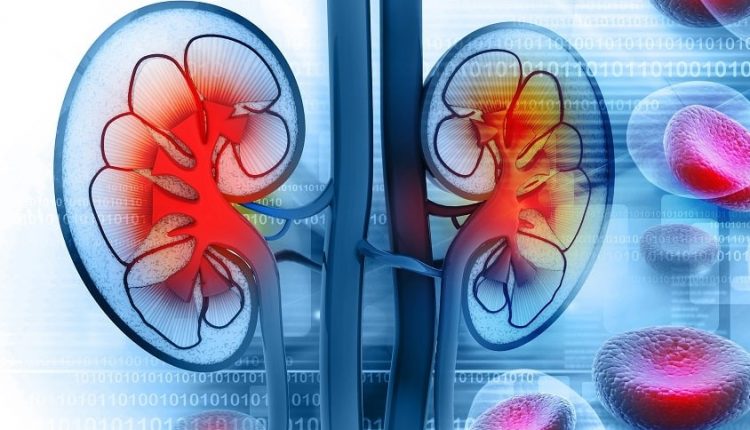
Systemic Lupus Erythematosus: causes, symptoms and treatment of SLE
Systemic Lupus Erythematosus (SLE) can be considered the model of systemic autoimmune diseases. The clinical presentation of SLE is highly variable and clinical pictures include general manifestations and alterations of various organs and systems
Systemic Lupus Erythematosus: Epidemiology
Lupus predominantly affects females of childbearing age with an F/M ratio of 9/1.
Prevalence ranges from 15 to 50 cases per 100,000 people with an incidence of between 1.8 and 4.6 new cases per 100,000 people/year.
What are the causes and risk factors of Lupus?
The causes of SLE are not completely known to date.
One of the most widely accepted hypotheses is that of a genetic predisposition on which certain factors act: infectious, hormonal and chemical-physical factors that are capable of inducing the production of auto-antibodies that in turn cause tissue alterations by various mechanisms (cell lysis or deposition of immune complexes).
Symptoms of lupus
General malaise, asthenia and weight loss are characteristic symptoms in the acute phases of the disease; fever is most often also present.
Following complications, all organs and apparatuses are affected (this is why it is referred to as systemic).
Skin manifestations
They are present in 65% of cases and can be classified as specific and non-specific. The former include:
– acute cutaneous lupus (ACLE) characterised by erythema of the cheekbones and nose, butterfly erythema, occasionally also affecting the neck and chest and all photo-exposed skin. It is an indication of disease activity and may be associated with mucositis of the hard palate. ACLE may heal without outcome.
– subacute cutaneous lupus (SCLE), which may present in an anulo-polycytic form (peripheral erythematous area surrounding a central pale area) and in a papular-squamous form (psoriasis-like skin lesions).
– chronic cutaneous lupus (CCLE) characterised by papules giving rise to irregular lesions that tend to induce scarring lesions.
There may also be non-specific skin manifestations: purpura, urticaria, skin or mucosal ulcers.
Musculoskeletal manifestations
Arthralgias and arthritis are frequent clinical manifestations of SLE.
Arthritis is symmetrical, non-erosive, affecting both small joints (hands and wrists) and large joints (elbows and knees).
Myositis is uncommon in contrast to myalgias and tenosynovitis.
Kidney manifestations
In half of the patients with SLE, glomerulonephritis may be noted, which may present clinically as: asymptomatic proteinuria, asymptomatic haematuria, nephrotic syndrome, rapidly progressive glomerulonephritis and chronic renal failure.
Cardiovascular manifestations of Lupus
Pericarditis, often asymptomatic, is the most frequent cardiovascular manifestation.
Libman-Sachs endocarditis, which affects the mitral valve, is less frequent.
Many patients with Systemic Lupus Erythematosus (SLE) present with premature and accelerated atherosclerosis due on the one hand to autoimmunity (presence of antiphospholipid antibodies) and on the other hand to the prolonged use of cortisone, which is used for SLE therapy.
Neurological manifestations
Neuro-psychiatric pictures may be local organic (epilepsy, transverse myelitis, stroke, optic neuritis and peripheral neuropathies) or diffuse (movement disorders, cephalic and psychosis).
Functional disorders include depression, anxiety and alterations of the affective sphere primitive disorders.
These may be primary or secondary to the knowledge that one is suffering from a serious chronic disease.
Haematological manifestations
They can all affect the red series (anaemia), the white series (lymph-leukopenia) and platelets (plateletopenia).
Anaemia may recognise a non-immunological cause (from iron deficiency or chronic renal failure or cytotoxic therapy) or an immunological cause (blood-autoimmune anaemia).
Forms affecting the white series and platelets are frequent, but rarely serious.
Other clinical manifestations
Serositis presenting as pleurisy, as well as pericarditis, are common.
Other clinical manifestations are Raynaud’s phenomenon and lung involvement, which can manifest itself in rare but very serious clinical pictures (acute lupus pneumonia, interstitial pneumonia and pulmonary haemorrhage).
Finally, let us remember mesenteric vasculitis, also a very rare clinical form.
Diagnosis of Systemic Lupus Erythematosus
The clinical diagnosis of SLE is difficult because the general clinical and organ manifestations are not distinguishable from those of other diseases, so the clinical diagnosis must be correlated with the laboratory diagnosis.
SLE, although being an inflammatory disease even in the active phases, has a CRP (C-reactive protein), while the ESR is almost always elevated.
Polyclonal hypergammaglobulinemia, the presence of Rheumatoid Factor, reduced C3 and C4 serum complement can be documented on protein electrophoresis, especially in the active phases of SLE.
Lupus is characterised by the presence of autoantibodies: ANA (antinuclear antibodies) positive in all cases, anti-nDNA (native or double helix anti-DNA), ENA (Extractable Nucluear Antigen). Anti-phospholipid antibodies in patients with recurrent miscarriages and/or thromboembolic manifestations.
Treatment of SLE: how to treat Systemic Lupus Erythematosus
As with all chronic diseases, the goal of therapy for SLE is disease control with prevention of complications.
Glucocorticoids: prednisolone is the most commonly used drug for arthritis, serositis, skin manifestations and glomerolonephritis.
Synthetic antimalarials: hydroxychloroquine and chloroquine are generally used in combination with immunosuppressants.
Immunosuppressants: these are used in cases that do not respond to glucorticoids. These include methotrexate, cyclosporine A, mycophenolate and cyclophosphamide.
Biological drugs: belimumab is an antibody that binds to the B Lymphocyte Stimulator (BLyS) which promotes apoptosis of self-reactive B cells.
Other therapies: intravenous immunoglobulins – in severe thrombocytopenia – and plasmapheresis – in thrombotic thrombocytopenic purpura and pulmonary haemorrhage – can be used in forms resistant to drug therapies.
Read Also:
Emergency Live Even More…Live: Download The New Free App Of Your Newspaper For IOS And Android
Blood Pressure: When Is It High And When Is It Normal?
Rheumatic Diseases: Arthritis And Arthrosis, What Are The Differences?
Increased ESR: What Does An Increase In The Patient’s Erythrocyte Sedimentation Rate Tell Us?
Systemic Lupus Erythematosus: The Signs Not To Be Underestimated



